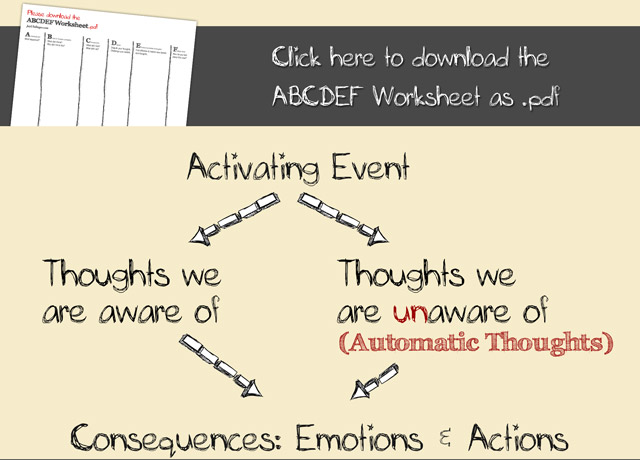Chapter 1: Practical Lesson, ABCDEF Worksheet
The main thing you should take away from the previous lesson (Chapter 1: Control, Happiness and a Simple Model) is that if you can control your thoughts and automatic thoughts you can control how you feel and how you act and that gives you way more control over your life and makes you happier.
Now lets have a look how this can help you in everyday life. I will ask you to write some things down. Some of you might not like this but writing things down really makes a difference. It helps you to organize your thoughts and because we work a lot with thoughts in this exercise you will want them to be organized.
Download the ABCDEF Worksheet
Essential Knowledge in this Lesson:
Sources:
Lyubomirsky, S. (2007). The how of happiness. New York: The Penguin Press.
Sheldon, K. M., & Lyubomirsky, S. (2007). Is it possible to become happier? (And if so, how?). Social and Personality Psychology Compass, 1, 1-17.
Andrew C. Butlera, Jason E. Chapman, Evan M. Forman, Aaron T. Beck (2005). The empirical status of cognitive-behavioral therapy: A review of meta-analyses. Clinical Psychology Review Volume 26, Issue 1, January 2006, Pages 17-31
Ellis, Albert, Corsini, Raymond J. (Ed); Wedding, Danny (Ed), (1989). Rational-emotive therapy. Current psychotherapies (4th ed.). Current psychotherapies (4th ed.), (pp. 197-238). Itasca, IL, US: F E Peacock Publishers, xi, 623 pp.

